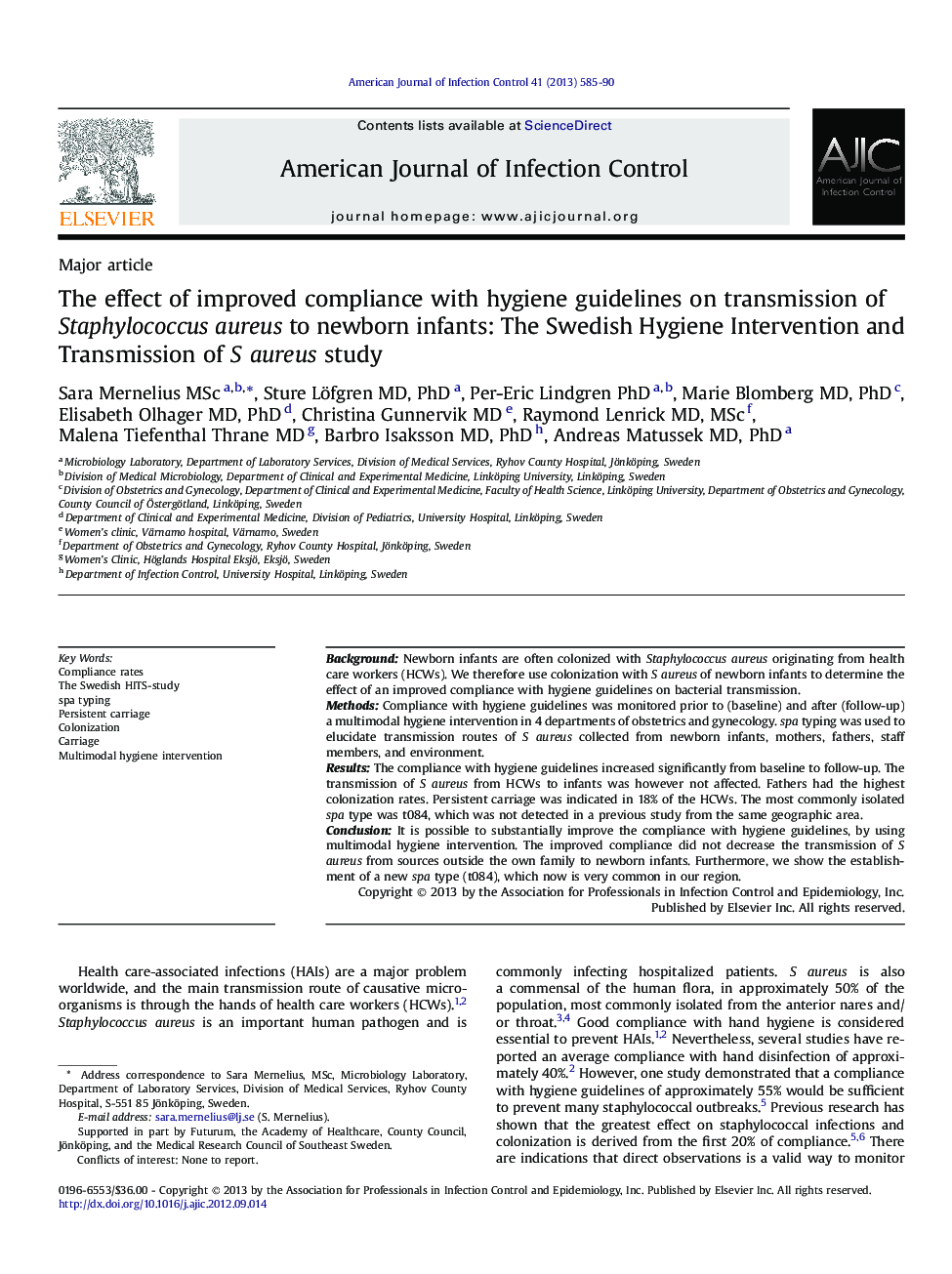| Article ID | Journal | Published Year | Pages | File Type |
|---|---|---|---|---|
| 2639728 | American Journal of Infection Control | 2013 | 6 Pages |
BackgroundNewborn infants are often colonized with Staphylococcus aureus originating from health care workers (HCWs). We therefore use colonization with S aureus of newborn infants to determine the effect of an improved compliance with hygiene guidelines on bacterial transmission.MethodsCompliance with hygiene guidelines was monitored prior to (baseline) and after (follow-up) a multimodal hygiene intervention in 4 departments of obstetrics and gynecology. spa typing was used to elucidate transmission routes of S aureus collected from newborn infants, mothers, fathers, staff members, and environment.ResultsThe compliance with hygiene guidelines increased significantly from baseline to follow-up. The transmission of S aureus from HCWs to infants was however not affected. Fathers had the highest colonization rates. Persistent carriage was indicated in 18% of the HCWs. The most commonly isolated spa type was t084, which was not detected in a previous study from the same geographic area.ConclusionIt is possible to substantially improve the compliance with hygiene guidelines, by using multimodal hygiene intervention. The improved compliance did not decrease the transmission of S aureus from sources outside the own family to newborn infants. Furthermore, we show the establishment of a new spa type (t084), which now is very common in our region.
